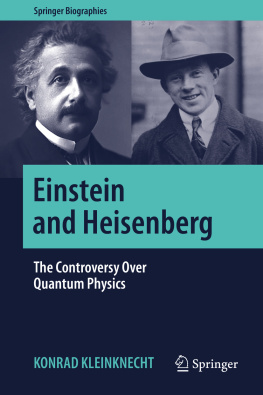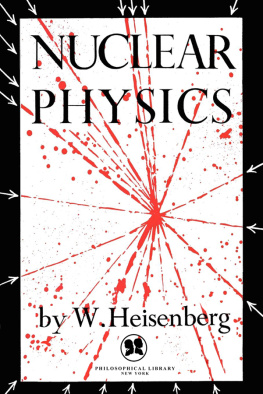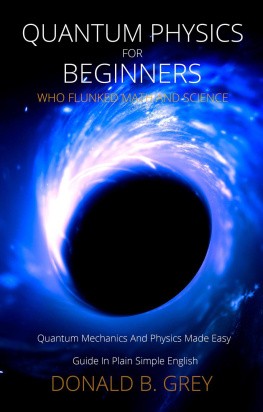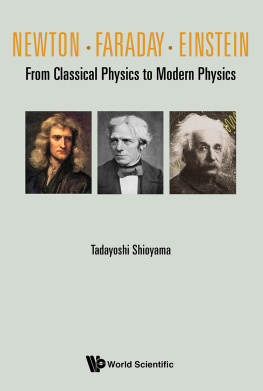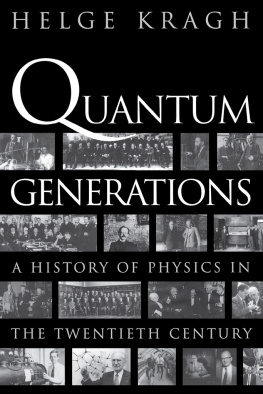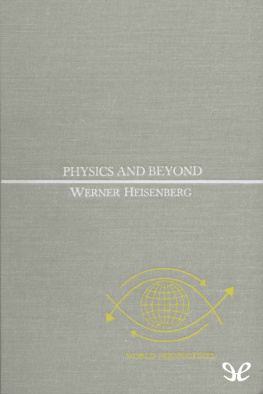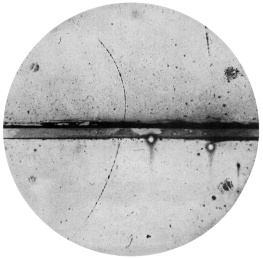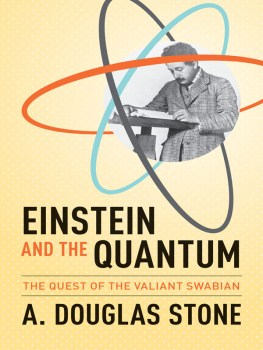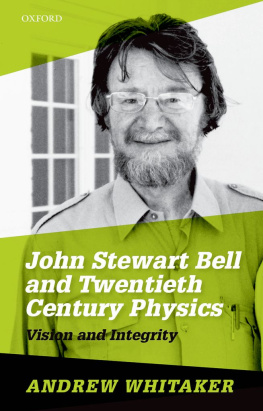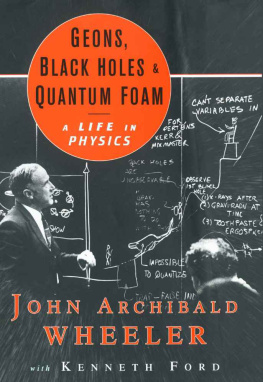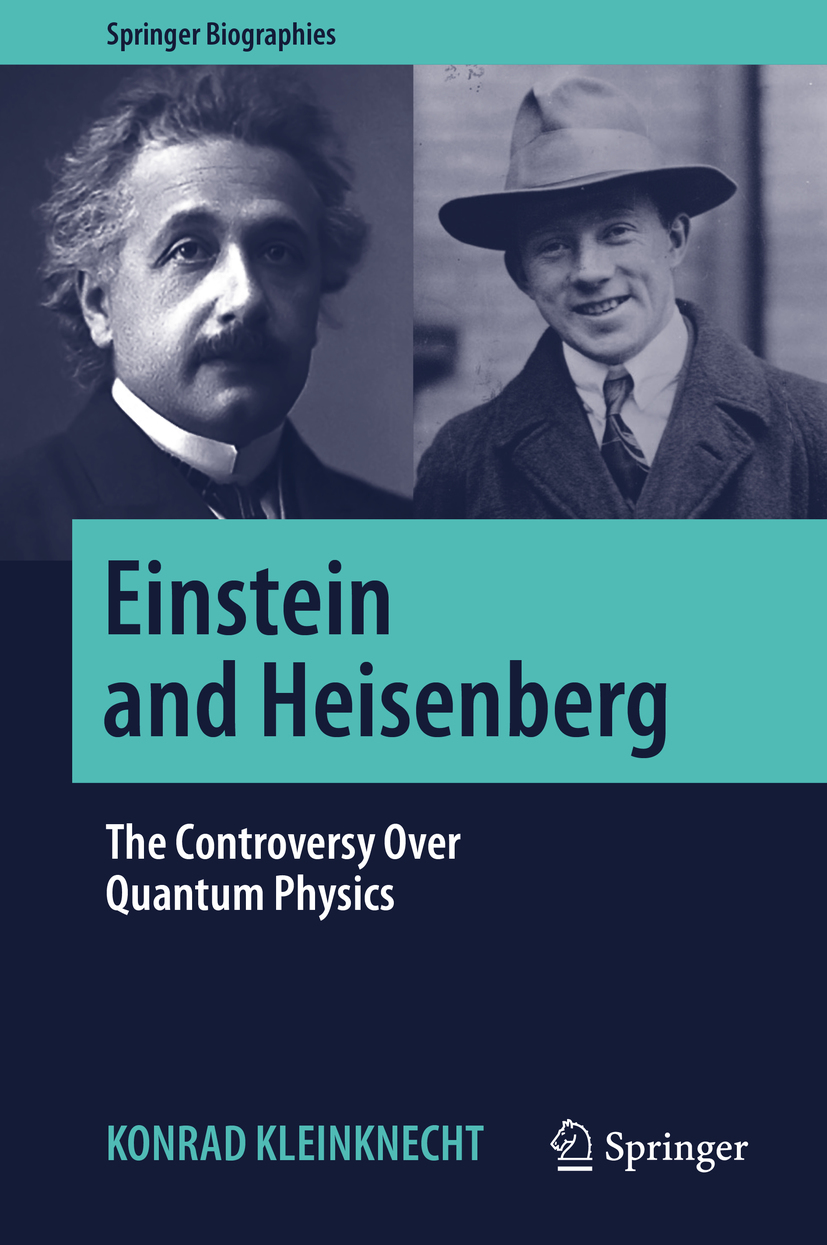Konrad Kleinknecht
Universitt Mnchen, Universitt Mainz, Mnchen, Germany
ISSN 2365-0613 e-ISSN 2365-0621
Springer Biographies
ISBN 978-3-030-05263-8 e-ISBN 978-3-030-05264-5
https://doi.org/10.1007/978-3-030-05264-5
Library of Congress Control Number: 2018965209
Based on a translation from the German language edition: Einstein und Heisenberg Begrnder der Modernen Physik by Konrad Kleinknecht, Copyright W. Kohlhammer GmbH 2017, All Rights Reserved.
Springer Nature Switzerland AG 2019
This work is subject to copyright. All rights are reserved by the Publisher, whether the whole or part of the material is concerned, specifically the rights of translation, reprinting, reuse of illustrations, recitation, broadcasting, reproduction on microfilms or in any other physical way, and transmission or information storage and retrieval, electronic adaptation, computer software, or by similar or dissimilar methodology now known or hereafter developed.
The use of general descriptive names, registered names, trademarks, service marks, etc. in this publication does not imply, even in the absence of a specific statement, that such names are exempt from the relevant protective laws and regulations and therefore free for general use.
The publisher, the authors, and the editors are safe to assume that the advice and information in this book are believed to be true and accurate at the date of publication. Neither the publisher nor the authors or the editors give a warranty, express or implied, with respect to the material contained herein or for any errors or omissions that may have been made. The publisher remains neutral with regard to jurisdictional claims in published maps and institutional affiliations.
This Springer imprint is published by the registered company Springer Nature Switzerland AG
The registered company address is: Gewerbestrasse 11, 6330 Cham, Switzerland
Preface
The physics of the twentieth century rests on two foundational pillars. At the beginning of the century, our place in the universe, the origin and evolution of the cosmos, and the meaning of space and time were consolidated by Albert Einstein into a new and revolutionary picture in a relativity theory described mathematically. Thereby, he predicted a great many heretofore unknown cosmic phenomena that, in the course of time, have been discovered empirically: deflection of light in a gravitational field, black holes, stretching of time in high-velocity objects, gravitational waves, and others. Shortly thereafter, in subjecting classical physics similarly to a revolutionary transformation, Werner Heisenberg was able to explain the behavior of the smallest building blocks of matter. With his quantum mechanics, he opened up for us the world of the submicroscopic constituents of matter, atoms, atomic nuclei, and elementary particles. It also permitted description of the physical attributes of molecules, chemical bonds, crystals, solid state, and semiconductors and is thus the foundation of modern computer technology. Heisenbergs discovery of the uncertainty principle has far-reaching consequences for the philosophy of nature and epistemology.
These two great scholars both grew up in Munich and attended school there, and both were lovers of music. Along with their commonalities, though, there were also significant differences in their modes of thought. Einstein held that a physical theory must predict events precisely according to the rules of causality. By contrast, from the phenomena in the atomic domain, Heisenberg concluded that a theory can only describe possible processes and their probabilities.
Einstein left us no autobiography; he felt such books were products either of narcissism or expressions of hostility toward his fellow man. So, we must restrict ourselves in understanding his life to his correspondence and to biographies. Particularly authentic in this regard are the descriptions by his friend Philipp Frank, written in German between 1939 and 1941 in the United States. Since Einstein himself contributed a foreword to this book in 1942, it may be regarded as authorized. The Einstein estate is held at the Hebrew University in Jerusalem, and since 1987, his collected works in several volumes have been published by Princeton University Press.
Heisenberg, on the other hand, has given us a fascinating narrative of his life in his Physics and Beyond , which also describes his scientific breakthroughs. Additionally, two volumes of his letters to his parents and to his wife have been published. Through the agency of the Heisenberg Society, the balance of his papers has been transferred to the Archive of the Max Planck Society in Berlin; the scientific correspondence with his friend Wolfgang Pauli resides in the Pauli Archive in Geneva. His scientific papers, as well as his more generally accessible writings, are available in The Complete Works , published by Springer and Piper.
I wish to thank Ms. Barbara Blum-Heisenberg for providing the illustrations relevant to Werner Heisenberg and for conversations about his relation to music. Professor Hans A. Kastrup drew my attention to Albert Einsteins letter to the writer and philosopher Eric Gutkind concerning religion.
For the translation of the German book to English, I am indebted very much to Tom Artin, New York. Thanks to Maury Solomon and Hannah Kaufman for editing the book and for their ever-friendly and constructive collaboration.
Konrad Kleinknecht
Mnchen, Germany
August, 2018

